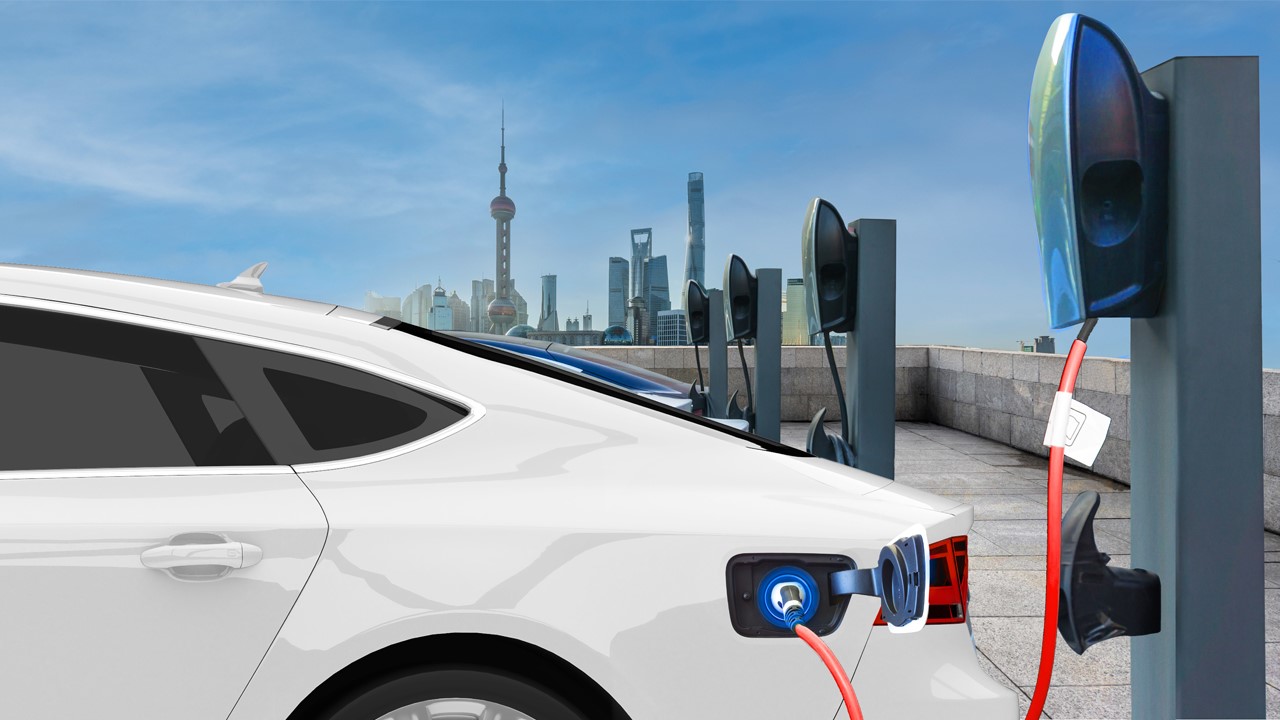Last year, a long discussed topic was put into practice in Shanghai: can electric vehicles (EV) become a flexible energy source for urban power grid?
Electric vehicle drivers obtain charging time signals from utility companies to make use of renewable energy when it is most abundant, and make full use of resources to avoid waste. 1 EV battery becomes the energy storage container on the wheel, which can release the excess power to the main power grid when the energy demand exceeds the supply.
This innovative pilot project shows that different types of chargers used in daily life, such as household chargers, public chargers and battery switching stations, can play different roles in supporting the urban power grid. As part of China's new infrastructure plan, the expansion of new energy vehicle charging stations has become a key part of realizing the long-term goals of modernization and environmental protection.
Other cities around the world have also taken rapid action in energy conservation and emission reduction. Technology is the key to helping them meet their energy conservation and emission reduction commitments, because technology can provide better power density when solving the challenges related to energy efficiency.
Through a more efficient and powerful system, focus on enhancing the real-time control ability of the system (real-time processing can collect data and update the closed-loop system in one trillion seconds), so as to significantly reduce emissions. Real time control is the key factor to open the next wave of innovation in the field of energy management.
Matt Watson,C2000 ™ Microcontroller Manager
As Ti C2000 ™ As a manager of microcontrollers (MCUs), I found that as people want to achieve more functions with less energy, their demand for real-time control is growing. Looking ahead, I believe that real-time control will have a significant impact on traffic and energy use in the following aspects:
Improve EV mileage and performance.
Upgrade and enhance EV charging infrastructure.
Innovate energy storage through solar solutions.
Why is real-time control important
Although real-time control is not a new technology – Ti introduced a special controller about 20 years ago, which promoted innovation in the field of digital signal processing – in recent years, due to the wide use of these components in intelligent automation systems, the global MCU market has increased significantly. 2 the real-time control system is a closed-loop control system, and the time window for collecting data, processing data and updating the system is very short. This control is very important for power conversion and advanced motor control applications, such as the movement of robots in factories.
For products that can rotate motor and convert power supply, design engineers are facing more and more requirements to improve efficiency, accuracy and product size. To maximize and optimize real-time control, special embedded devices need to be used in the system, which can significantly shorten the delay, achieve low power consumption and cost-effectiveness. If engineers try to use non real-time controller devices instead of a single microcontroller specially designed for control applications, they may inadvertently prolong the design time.

If we apply real-time control technology to some energy sensitive areas in the city (such as increasing EV and using solar energy), we can see their potential to have a far-reaching impact on energy storage and management.
Expand EV mileage and performance
Almost every subsystem in EV depends on some form of real-time control. A number of exciting innovations make cars more efficient and more fun to drive, while coping with mileage anxiety, charging time and other obstacles to EV popularity.
New power technologies, such as gallium nitride (GAN), have the potential to meet these challenges by improving power density and efficiency, increasing mileage and improving reliability. However, to release the potential of Gan, we need to use real-time controller, which can combine high switching frequency with configurable control, so as to reduce power loss and noise to a greater extent. Microcontrollers can help Gan achieve ultra-high efficiency and power density.
The further development of real-time control can improve the processing capacity and enhance the sensing and driving performance, which can achieve higher accuracy and efficiency, and make the vehicle more economical by improving the system integration.
Upgrade and enhance EV charging infrastructure
EV has a strong momentum of development – carmakers invest in and mass produce vehicles using cleaner energy – cities may need to increase investment in high-performance charging infrastructure to meet the charging needs of more electric vehicles.
The technology used in these charging stations must be cost-effective and the charging time must be shortened. Real time control is essential to provide a fast charging experience and minimize power loss. It also reduces the restrictions on the grid infrastructure, because the EV charging system can convert the AC of the grid into DC for EV battery charging. High charging efficiency also helps the driver charge the battery quickly and drive faster on the road.
Innovate energy storage through solar solutions
The experiment in Shanghai is just an attempt to turn renewable energy into flexible power resources.
A revolution is taking place in the field of photovoltaic inverter system, which uses the storage capacity of the battery to provide energy without sunlight. These systems combine several key pillars of real-time control: transmission from solar panels to the grid, transmission from the grid to energy storage batteries, and transmission from batteries back to the grid. There are three nodes that need power conversion, in which power loss may occur, so it needs to be carefully considered in the design. Real time control can provide the accuracy required to maximize the output and reduce the power loss of bidirectional power conversion to a greater extent, so as to realize the bidirectional efficient flow of DC and AC in the system.
Renewable energy needs to be controlled in real time. Now, the requirement of reducing carbon emissions is becoming increasingly urgent all over the world, and real-time control is the core key to make the system more energy-efficient and the environment better.